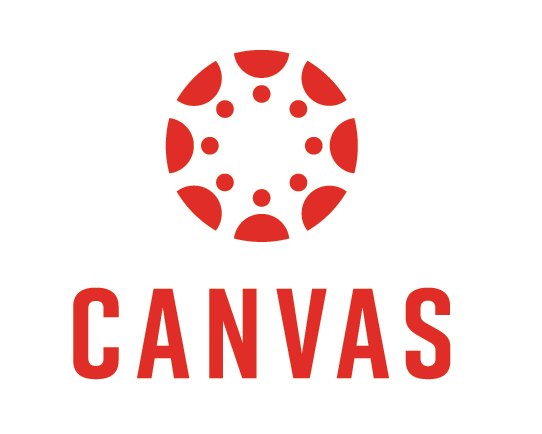About Instructure Holdings
Headquartered in Salt Lake City, Utah, Instructure Holdings is one of the most prominent, established yet growing educational technology (EdTech, for short) companies in the world.
Before getting more up close and personal with the company from a more boring, technical perspective, by virtue of being a student at a university that is partnered with Instructure Holdings and one of its largest (if not its absolute largest) subsidiary learning platforms, some personal, introductory notes are in order.
This subsidiary goes by the name of Canvas (it is also worth briefly mentioning that Instructure owns a few other education technology-related companies, in addition to Canvas), and I know it all too well, as it is basically a digital platform (both online and in the form of a mobile app) where both students and professors can essentially instantaneously access whatever classroom-related material they need to, from mission critical documents (think syllabi) and a list of assignments to grades and even quizzes and examinations that can be taken and/or turned in through the Canvas platform in a matter of a few clicks, either through taking a picture and submitting said picture through the platform or performing the relevant task on Canvas itself.
As a student, I have completed and turned in assignments, quizzes, exams, directly messaged peers and professors and performed a few other functions through Canvas and low and behold, have found it to actually be a very intuitive, user-friendly, efficient platform and I don’t actually recall having any sort of issue with the platform itself.
From what I have heard, it also immensely streamlines professors and other faculty members in their work and daily operations, allowing them to make any subtle or not so subtle changes to one’s grade, also acting as a more than convenient yet comprehensible platform through which professors can deliver any sort of document, assignment, exam and any announcement they may need to make within a matter of seconds as well.
I have had a lot of headaches with other prominent EdTech companies and their unintuitive, slow and shoddy products and Canvas is just different in the best way(s) possible.
Speaking of the competition, one of the company’s largest competitors is a platform by the name of Blackboard, which I’ve used in the past and while it certainly was and is not a bad platform by any means, I, along with many others have found Instructure-owned Canvas to be much better, if one even cares to know.

I’d also like to quickly note that Instructure recently announced that it is in the process of acquiring another more specialized educational technology firm by the name of Parchment, which I am also all too familiar with, sadly, in that it is among the world’s largest middlemen when it comes to storing, processing and delivering (both digitally and physically) transcripts, which I am not the biggest fan of as a student, especially when I was initially applying to college, however, given the trends regarding more and more young people wanting to go to college and most colleges (and universities) requiring an official transcript (either from your high school or original college or university you are transferring from), we agree with Instructure in that this is a strategic acquisition and way in which the firm can further boost its revenues through more kids applying to colleges and other school programs.
So, at the end of the day, Instructure Holdings is a software as a service (SaaS) company that offers universities along with other educational institutions (i.e., not just colleges and universities) an all-in-one center for both students and professors, primarily generating revenues through the sale of subscription packages to said institutions and entities.
We also enjoy the fact that this company’s fairly recession resistant in that once clients (primarily universities in this context) integrate their students and faculty within their system, they aren’t likely going to let go, as students and professors are largely creatures of habit, as well as the fact that largely irrespective of the condition of the greater overall economy, universities and other educational entities will still need Instructure’s products (certainly Canvas, at least, given that if my university parted ways with Canvas I, among other students would be incredibly lost and frustrated), which, obviously, bodes well for a company such as this one as well.
At any rate, that is Instructure Holdings and this is the company’s core financials and other relevant figures.
Instructure’s stock financials
In beginning to put the pieces of the Instructure puzzle together, the company presently maintains a market capitalization of $3.66 billion and is also matched with a share price of $25.43 along with no annually issued dividend nor a presently displayed price-to-earnings (P/E) ratio, all of which initially makes sense, particularly in that this is a SaaS company and as we have seen time and time again, these companies practically require a lot of continual investing and reinvesting in both current and new product lines and/or services so as to retain current clients as well as engage with and retain new ones as well.
Thus, the occurrence of not a cash-draining dividend nor any firm earnings to report (referencing its negative trailing twelve month earnings per share, or EPS figure of -0.24) is far from surprising.
All of this was to be reasonably expected, at least from where we stand and what we have seen thus far.
Moving right over to the state of the company’s balance sheet, Instructure’s executive team is in charge of taking care of and tending to around $2.1 billion in terms of total assets as well as $877 million in terms of total liabilities, which, from our vantage point is quite an attractive overall balance sheet structure, as the company can seemingly sufficiently tend to its all of its debt(s) and other liabilities (a few times over, at that) and also has a great deal of space to grow its business through some debt financing in order to fund more growth initiatives, be it in-house initiatives or perhaps outside growth catalysts, which we will actually be touching on in more depth later in this article.
As it relates to the company’s income statement, specifically its recent total annual revenues, Instructure has certainly been growing its revenue base (referencing since 2018 only), as, for instance, the company’s annual revenue amounted to $209.5 million in 2018, which has since risen on a consistent, year-over-year (YOY) basis to its last displayed figure (on TD Ameritrade’s platform) of just north of $475 million.

This largely implies that Instructure has been targeting and successfully onboarding and acquiring more and more educational venues (i.e., more high schools and colleges), thus growing its revenues, perhaps also growing its revenues by imposing some mild price hikes throughout the last couple of years due to inflationary and interest rate-related pressures being imposed on its ability to borrow and operate its business overall.
Regardless, Instructure Holdings should have been growing its revenues at a notable pace, from our perspective, and we are sure glad to find that it is.
Now, let’s see just how much cash is bleeding through its operations in attaining the aforementioned revenue figures.
With respect to the company’s cash flow statement (also referencing data since 2018), Instructure has, for the most part, thankfully, been total cash from operations positive, barring its one negative year during this time period of -$20 million, as reported during 2020, which was certainly an extraordinary year for most (if not for every) person and business, and Instructure likely had to eat some heightened costs and/or go through some forms of short and intermediate-term business transformations during this unprecedented era, thus the mild and seemingly temporary cash burn.
At any rate, this was seemingly a short-term move, as during the years that followed, the company’s total cash from operations sprouted up to $105 million and $140 million in 2021 and 2022, respectively, which is a good sign, even if it does objectively indicate that Instructure doesn’t yet have the highest of gross profit margins, comparing the aforementioned total cash from operations figures to the company’s revenues.
Instructure’s stock fundamentals
First and foremost, we did not initially expect the company’s trailing twelve month (TTM) net profit margin to be positive, as, with most SaaS companies, even the most well known and established can struggle with attaining a competitive, positive TTM net profit margin primarily due to the extensive investment(s) being put into play within the company, thus muting its overall profit margin, which, for a younger SaaS company is something we don’t generally mind, so long as we can also see a viable path to profitability in the near future.
At any rate, Instructure’s TTM net profit margin (as found on TD Ameritrade’s platform) is listed at a not so distant yet still rather unappealing -6.55% to the industry’s listed respective average of -2.21%, however, to a degree, this makes sense, given that this neck of the woods within the EdTech space is still rapidly growing and transforming, I’d say on a daily basis, therefore, within the context of such a high-growth nook of the industry, both the company’s TTM net profit margin and the industry’s average TTM net profit margin being negative isn’t all too shocking and we are also glad for the fact that the firm’s TTM net profit margin is not all that distant from that of the industry’s average.
On the spectrum of TTM returns on both assets and investments, as expected to a large degree, Instructure’s figures in these respects definitely aren’t anything to write home about, as for example, the company’s TTM return on investment is listed at -1.88% to the industry’s respective average of 17.36%, also according to the figures found on TD Ameritrade’s platform, which I think can be largely attributed to smaller, leaner players within the space, whereas Instructure already hosts a variety of platforms and has much more scaled operations and thus associated costs, therefore it will likely take some time for the company’s core TTM return metrics to reach that of the leaner competition’s average, again, as Instructure is likely in the process of planting a great deal of investments that will (hopefully) bear some form of fruit in the years and decades to come.
A consideration for Instructure
Given that Instructure’s balance sheet is in a relatively good state and that it is seemingly keen on inking some strategic acquisitions (i.e., its recent announcement regarding its intent to purchase Parchment), it might not be a bad idea for the company to continue hunting and perhaps, if it hasn’t already, look into purchasing yet another formidable player within the educational technology space, Proctorio, which, especially with the continual adaptation of students taking classes remotely (i.e., online), is bound to continue expanding its footprint as well.
In short, Proctorio is yet another EdTech software company that is focused on, really, monitoring students as they take exams remotely, tracking their movements and where they themselves are taking the test, essentially (supposedly, at least) making sure students aren’t cheating or looking at anything else or getting answers from something or someone during an exam.

Yes, I’ve used it (actually, I was forced to use it, along with millions of other students) and yes, it is as creepy and annoying and privacy invading as it sounds, as it also asks you to show your surroundings and also put up your photo ID up to the screen prior to the exam.
Nevertheless, this might just be a great opportunity for Instructure as whether students like me like it or not, it is still a platform that I don’t see going anywhere anytime soon, and in fact, it will more than likely grow.
Should you buy Instructure stock?
Shoutout to Canvas, it works quite well.
Outside of tipping my hat to Instructure’s software development team(s), based off of these initial numbers and other relevant figures, for a growing SaaS operator, Instructure seems to be in a very good position with its market share with respect to the competition, its balance sheet being total asset-heavy but with some manageable debt and financing firepower to be noticed, its revenues have been growing at a fine rate, its total cash from operations in recent years have been largely positive, with, in more recent years, growing, and while its TTM return on assets and investment(s) metrics aren’t as attractive as one might’ve hoped they would be, this is to be expected for all of the reasons mentioned in the previous paragraphs.
All things considered, we think it is a great long-term portfolio contender and candidate, hence the “buy” rating.
DISCLAIMER: This analysis of the aforementioned stock security is in no way to be construed, understood, or seen as formal, professional, or any other form of investment advice. We are simply expressing our opinions regarding a publicly traded entity.